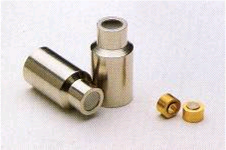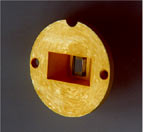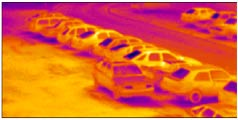| |
|
 |
 |
 |
|
|
 |
IR Optics |
|
|
|
|
|
|
|
Attenuated Total
Reflection (ATR)
elements
The inherent
strength, wide
spectral
transparency and
chemical resistance
combination of
diamond makes it an
ideal crystal for
ATR applications.
Other ATR crystal
such as ZnSe or Ge
can be scratched or
corroded with some
materials under
test, however
diamond is
significantly more
resistant to this
effect. Diamond can
be configured into
planar or complex
geometric shapes for
ATR applications.
The configuration of
the ATR element and
the optical light
path will determine
what diamond type is
best suited for the
application. Both
natural and
synthetic diamond
types can be used. A
further option to
stand alone crystal
is mounting the
crystal to a
suitable frame or
fixture.
Windows for process
control
In situ process
monitoring has been
shown to be the most
effective way to
ensure that a final
product meets or
exceeds
specification. For
many aggressive
chemical processes,
viewing the process
is limited due to
temperature and
pressure of the
environment. Both
natural and
synthetic diamond (CVD)
can overcome many of
these impediments. A
planar piece of
diamond is typically
attached to a metal
frame creating a
component that can
be attached to a
process line. The
diamond window
assembly can be
engineered and
specified to
withstand extreme
conditions. Certain
processes may not be
extreme, but can
still utilize
diamond for its
chemical inertness
and durability.
Extended lifetime of
a view port may lead
to a benefit of less
maintenance and down
time providing
valuable cost
savings.
|

Type IIA IR window
for process
inspections |

CVD diamond windows
in an IR
transmission cell |
|
Synchrotron windows
A CVD diamond window
has been
incorporated into a
titanium flange. The
window assembly has
been designed for
use in infrared
beamlines. To obtain
a flat spectra, a
wedge of 1° is
induced over the
thickness of the
diamond window
reducing possible
interference fringes
in the far infrared.
The standard flange
is available for 2
window sizes, 15.0
and 20.0 mm in
diameter with a
clear aperture of
10.0 and 15.0 mm
respectively. The
assemblies are rated
to 1 bar pressure
differential,
bakeable to 200° C
and are leak tight
to 2 x 10-10 mbar
l/s.
|
|
Thermal imaging
windows
Diamond has
exceptional
transmission
characteristics in
the 8-14 µm
wavelengths. A
diamond window
produced from either
natural or synthetic
diamond can be
processed to achieve
high flatness and
low roughness that
reduces distortion
in the transmitted
wavefront. The high
thermal conductivity
of diamond may also
be an advantage in
novel thermal window
applications.
|

Thermal image
through a high
quality CVD diamond
planar window. |
|
|
|
|
|